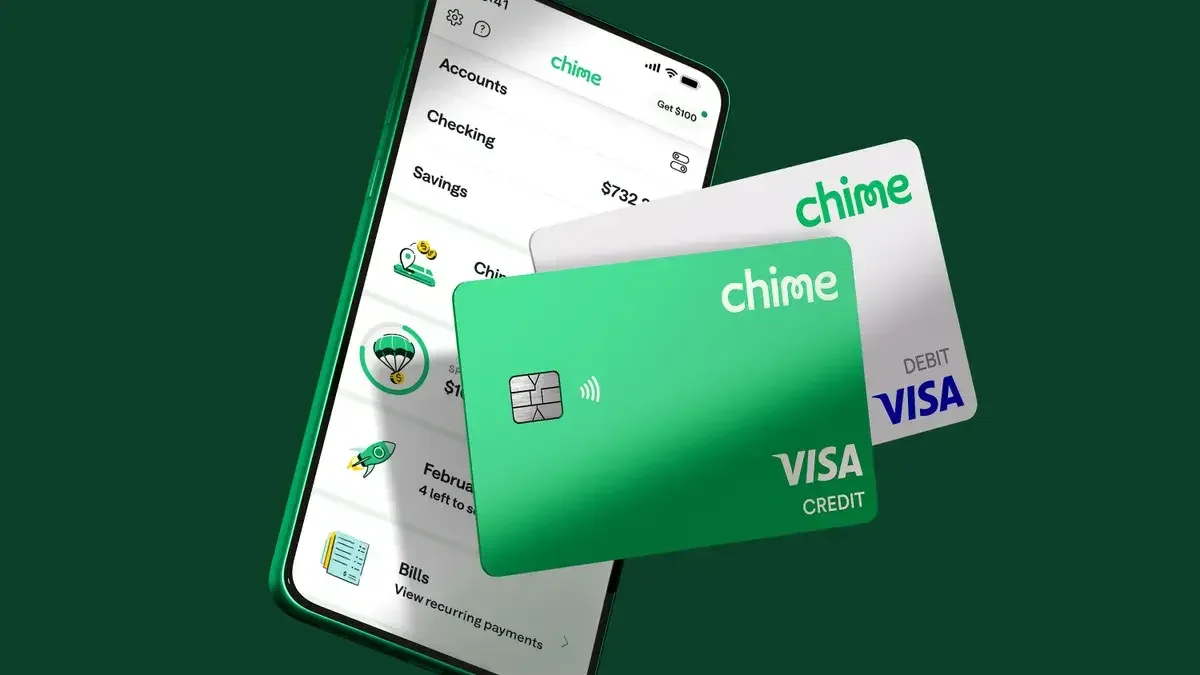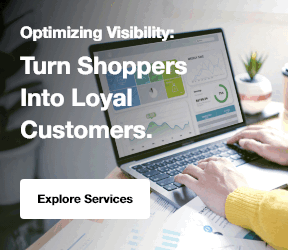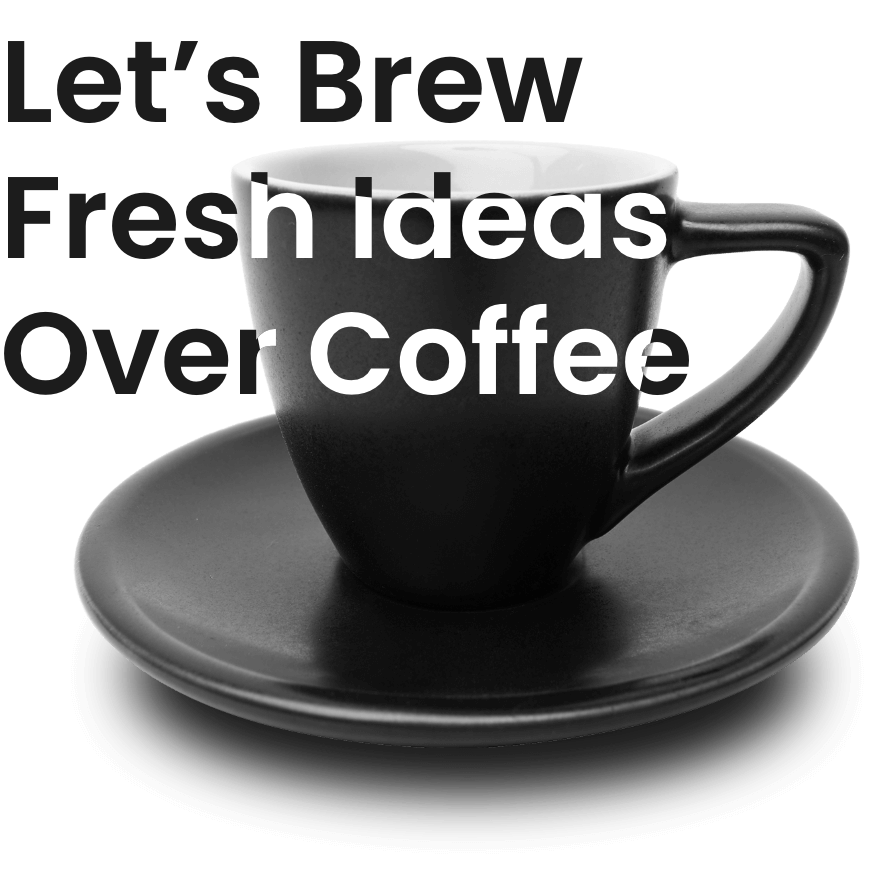Chime is often hailed as the poster child of U.S. challenger banks – a digital banking startup. It skyrocketed from scrappy launch to a $11.2 billion valuation by doing things in marketing. Founded in 2013 by CEO Chris Britt, Chime set out to win over Millennials, Gen Z, and millions of Americans left frustrated by traditional banks’ fees and lack of trust. The result? Explosive user growth (from under 1 million users in 2017 to about 12 million by 2020, media logic: With that, over 20 million by 2023) and a beloved brand that “has your back”. This case study breaks down how Chime’s savvy marketing, from mission-driven brand positioning to influencer-fueled virality, powered its meteoric rise. We’ll examine things such as Chime’s unique positioning, product-led growth features, and influencer strategy. Along with that, performance marketing tactics, standout campaigns, PR wins, growth levers like referrals and partnerships, and key metrics. The tone is direct and marketing-focused-distilling facts. Hence, performance insights and actionable lessons from Chime’s Journey.
(Spoiler: A relentless focus on customer pain points, a fee-free product that markets itself, and cultural marketing mojo turned this fintech into a household name.)
Brand Positioning: Banking “That Has Your Back” for the Underserved
From day one, Chime’s brand positioning set it apart. The company’s founding insight was that traditional banks were neglecting a huge swath of Americans, especially young, working-class consumers hit with a needless steep growth curve. CEO Chris Britt described Chime as “a technology company, not a bank,” partnering with FDIC-insured banks behind the scenes, but crafting a bold consumer-facing brand growth curve. Chime zeroed in on millennial and Gen Z customers living paycheck-to-paycheck (core users earning ~$35k–$65k) and the broader underbanked population who felt overcharged and underserved by the incumbent banks growth curve. This mission-driven focus became a golden differentiator in marketing.
Chime positioned itself as the antidote to unfair banking practices, highlighting a simple promise: no hidden fees, no minimums, get paid early, we’ve got your back. One of Chime’s consistent taglines encapsulated its ethos: “banking that has your back.” This values-driven messaging struck an emotional chord with young consumers. It wasn’t another checking account; Chime was selling “relief and respect” to customers long penalized by big banks' growth curve. Campaigns and ads hammered on everyday pain points – “Get paid two days early” (solving the wait for payday), “No overdraft fees” (no more surprise $35 charges), “No monthly fees” – tapping into deep frustration with legacy banks growth curve.
By positioning itself as a champion for the little guy Chime built trust and cultural resonance. Users felt like “Chime is on my side”, a friendly partner in their financial life rather than another institution nickel-and-diming them. This authentic, mission-led brand laid the foundation for Chime’s marketing: every message reinforced that Chime is here to help everyday people, not profit off them growth curve.co growth curve.
Chime backed up its promise with product policies aligned to that mission (more on the features next). It has made the branding believable. The consistency between what Chime said (“we’re different, we have your back”) and what Chime did (no fees, helpful features) gave it credibility with skeptical young customers. By treating underserved customers with respect and speaking their language, Chime’s brand won a level of goodwill most banks could only dream of. In short, Chime made banking feel friendly and fair, turning its mission into a powerful marketing asset.
Product-Led Growth: User-Centric Features that Fueled Word-of-Mouth

Chime’s product wasn’t just a banking service – it was a marketing engine in itself. The startup pioneered a product-led growth strategy, utilizing digital marketing services to amplify standout user-centric features that attracted and retained customers. Chime understood that by solving pain points, satisfied users would naturally spread the word. Many of Chime’s signature features effectively became advertisements for the brand every time a customer experienced their benefits
1. Fee-Free Overdraft with SpotMe:
Chime introduced SpotMe, allowing eligible customers to overdraft up to $200 with no fees growth curve. This was a game-changer in a country where banks raked in billions from $35 overdraft penalties. For a cash-strapped Gen Z or millennial user, seeing a negative balance covered by Chime (instead of getting slapped with a fee) created instant loyalty. It delivered on the “we’ve got your back” promise. Every time SpotMe saved someone $30, that user had a reason to tell a friend about Chime. In effect, Chime turned a bad experience (overdraft) into a delightful surprise, which drove positive buzz.
2. Early Direct Deposit:
Chime’s tagline “Get paid two days early” comes from its Early Direct Deposit feature – if you set up direct deposit, Chime gives you access to your paycheck up to 48 hours early compared to traditional banks' growth curve. This resonated with customers living paycheck-to-paycheck. When Friday’s paycheck shows up on Wednesday with Chime, that’s real value (covering bills or groceries sooner) and a clear differentiator.
It wasn’t lost on Chime’s marketing team that “Why wait for payday?” makes for a compelling campaign theme. (They later turned that phrase into a major ad campaign for the MyPay product launch, as we’ll discuss.) The key is that early pay isn't a catchy promise – Chime’s product delivered it, reinforcing trust. Chime’s product launch services played a crucial role in turning this promise into a successful and impactful campaign that built strong customer loyalty.
3. No Hidden Fees & Auto-Saving:
It's important were all the fees Chime doesn’t charge. No monthly maintenance fee, no balance, no foreign transaction fee, no overdraft fee, etc. This fee-free model was central to Chime’s product design and marketing. It made Chime “Buzzworthy in communities fed up with bank fees,” as one analyst noted growth curve. People tell friends when they find a bank that doesn’t gouge them. Additionally, features like automatic savings (round-ups, the ability to save a percentage of each paycheck) and a Credit Builder secured card (which had no interest or annual fee) rounded out Chime’s user-centric toolkit. All to help users improve their finances, not trap them in fine print.
Chime’s strategy of delivering real, tangible benefits through product features turned many first-time users into evange lists growth curve. The company lets its product do the marketing: solve customers’ money problems, and they will refer you. This product-led approach created a viral loop: every time a Chime user boasted “I get paid early” or “I never worry about overdraft fees now,” it was like a mini advertisement for Chime. 67% of Chime’s 8+ million active customers use Chime as their primary account growth curve.co, meaning they trust Chime with their paycheck and daily spending.
Each active customer swipes their Chime card an average of 54 times per month.co – that high engagement is both a result of Chime’s useful features and a driver of its word-of-mouth growth. In essence, happy customers became Chime’s greatest marketing channel.
It’s also worth noting how Chime’s business model supported this growth. Because Chime makes money from interchange fees (a small cut of transactions paid by merchants) rather than from user fees, its incentives align with customers using and loving the product growth curve.cogrowthcurve.co. Chime only profits when members swipe their cards, not when members slip up. This meant the company could say, “We only win when you win,” adding credibility to marketing claims.
That alignment allowed Chime to encourage behaviors like direct deposit and heavy card usage with a straight face – it wanted users to succeed (since user success = Chime’s revenue). This trust-based model amplified referrals and loyaltygrowthcurve.cogrowthcurve.co. In summary, Chime’s product-led marketing playbook was to build a bank so that customers would do the advertising themselves, driven by genuine appreciation for the product’s benefits.
Performance Marketing & Referral Engine: Efficient Digital User Acquisition
Chime complemented its organic virality with sharp performance marketing and a generous referral program, achieving scale at low acquisition costs. In the early years, Chime relied almost entirely on digital channels – social media ads, app store marketing, email campaigns, and referral invites – and avoided expensive traditional media growth curve. This was intentional and strategic: the target young demographic wasn’t watching cable TV or reading newspaper ads; they were on smartphones.
Digital marketing transformation allowed Chime to be targeted, data-driven, and cost-efficient during its initial growth spurt. For example, Chime poured spend into Facebook/Instagram ads touting “no fees” and “banking for you,” ran YouTube pre-roll videos explaining Chime’s benefits, and optimized its App Store presence so that it ranked high for finance-related searches. By focusing on measurable digital channels, Chime kept its customer acquisition cost (CAC) far below that of traditional banks.
Incorporating B2B marketing services helped Chime extend its reach to businesses looking for better financial solutions. This strategic approach was essential in scaling the company while maintaining a strong digital presence.
Industry estimates show digital banks like Chime average around $100 CAC per user, versus $600+ for traditional banks that depend on branches and large ad campaigns growth curve. This huge cost advantage ( thanks to referrals and online marketing instead of physical infrastructure) meant Chime could grow fast on a startup budget.
Referral marketing was Chime’s secret weapon and became its #1 acquisition driver. The team built virality into the product via in-app referral bonuses. A long-running offer: “Refer a friend and you each get $50” once the friend sets up direct deposit. Chime was willing to invest ~$100 in bonuses for each referred customer (paying $50 to the referrer and $50 to the new user) – but this often outperformed buying users via ads, because referred users were high-quality.
They came in with trust (since a friend endorsed Chime) and they completed direct deposit to trigger the bonus (making them active primary users), growth curve. In other words, Chime wasn’t spraying money for random installs; it was rewarding members for bringing in friends who became engaged customers. This referral flywheel paid off. By 2022, Chime reported that member referrals were its single biggest source of new active users growth. The app made it easy and even fun – referrals with tracking and occasional boosts (e.g.,limited-time higher bonuses).
Chime even ran promos like “refer 10 friends and earn $1,000” (capping at $100 per referral), sway stack, turning its user base into a motivated salesforce. This social acquisition engine helped Chime add millions of users with minimal ad spend, leveraging the most powerful marketing of all: word-of-mouth. “People tell their friends about services that save them money,” Chime’s team noted, and that principle is incorporated into their growth strategy growth curve.
Chime did, of course, invest in paid performance marketing too, especially as it scaled, but it maintained a disciplined approach. The company tracks metrics like crazy, measuring install conversion rates, cost per funded account, and even down-funnel metrics like how many new users become active swipers or set up direct deposit.
Chime optimized its marketing funnel. For instance, upon signup, users get a series of onboarding emails (about 12 in the first 15 days) educating them on Chime’s features and nudging key actions (like activating their card, enabling savings, etc.), sway stack. In the app, new members see prompts to deposit money or link an external bank via Plaid right away. Chime even streamlines direct deposit switching by pre-filling forms or integrating with payroll providers so that new users can move their paycheck over to Chime.
These tactics improve activation rates and retention – a crucial aspect of performance marketing is not acquiring users, but retaining them. Chime ensured its onboarding process turned signups into engaged customers, maximizing the ROI of each acquisition. As evidence of efficiency, Chime spent about $520 million on marketing in 2024, only a 15% increase from the prior year, while revenue grew by 30% growth curve. This implies lower cost per acquisition and higher lifetime value – in fact, Chime’s revenue per active user reached $251 in 2024, up from $210 in 2022 growth curve.
The company is squeezing more value from each customer while keeping acquisition spend in check, thanks to strong referral growth and better organic reach (e.g., SEO content marketing, which we’ll touch on next), and growth curve.
It’s also notable that Chime dominated the app stores, which itself was a growth lever. In H1 2021, Chime was the most-downloaded digital banking app in the U.S. with 6.4 million installs, more than doubling the downloads of its next closest competitor, Banking Dive. This momentum in app rankings created a virtuous cycle: top-ranked apps get more organic installs. Chime’s high user ratings (it calls itself the “#1 Most Loved Banking App”) and clever App Store Optimization for keywords like “bank, paycheck, free banking” ensured it was visible to anyone searching for a new bank app.
By excelling in digital acquisition channels and harnessing referrals, Chime achieved efficient growth at scale. Its estimated cost per account of ~$100 was likely recouped given how users transact (generating interchange revenue) and the absence of costly branch overhead. In short, Chime cracked the code on scalable user acquisition, using a blend of viral loops, growth hacking, and disciplined ad spend to leave traditional banks in the dust.
Social Media & Influencer Marketing: Making Banking Go Viral
Chime understood early that to win over Millennials and Gen Z, it needed to meet them where they spend time – on social media – and speak their language. The company’s social media strategy eschewed the stuffy, formal tone of traditional banks in favor of a friendly, relatable voice. On Twitter (X), Instagram, TikTok, and Facebook, Chime interacts with users like a peer: cracking jokes about payday, sharing memes about hating fees, and responding to customer questions or complaints in a public growth curve.
This casual, human approach made followers feel like Chime is a community, not a bank. For example, Chime often reposts user-generated content, such as real customers’ testimonials, tweets celebrating “I hit a 700 credit score thanks to Chime’s builder card!”, or TikTok skits about the joy of avoiding growth curve co. By putting the spotlight on its users (making them the heroes of Chime’s story), the brand built deep affinity. Prospects scrolling by see not ads, but authentic stories of people like them getting ahead with Chime.
This drives both trust and FOMO (“I want that experience too!”). Chime also uses its social platforms to offer bite-sized financial tips and education (budgeting hacks, credit tips), delivering value beyond the self-promotion growth curve. This further solidified Chime’s positioning as a helpful partner in your financial journey. The payoff for this social media savvy has been strong engagement and earned media virality – many of Chime’s tweets and TikToks get shared, acting as free advertising.
Where Chime broke new ground was influencer marketing. Long before it was commonplace for banks to be on TikTok or partner with YouTubers, Chime recognized that the right influencers could turbocharge its reach among young consumers' growth curve. But Chime executed these partnerships in a way that felt genuine and on-brand, avoiding the trap of cringey or forced endorsements. The company worked with a range of creators: from personal finance educators on YouTube/blogs to mainstream lifestyle and entertainment influencers with huge followings and growth curves.
The strategy was always to ensure the influencer actually liked and used Chime so that their promotion came off as authentic. For instance, Chime partnered with YouTubers known for budgeting or “debt-free journey” content – their audiences a no-fee banking app. On Instagram, Chime teamed up with relatable micro-influencers who share money tips or everyday life content, rather than random celebrities. By selecting influencers whose audiences aligned with Chime’s target (young, financially active individuals), the campaigns resonated.
One standout example was Chime’s 2024 MyPay campaign, promoting its new on-demand paycheck product. Chime went big, enlisting social media superstars Kai Cenat and Zach King to anchor the campaign. Growth curve. (Kai Cenat is a popular Twitch streamer known to Gen Z, and Zach King is one of TikTok’s biggest creators, famed for his visual magic tricks.) These influencers created content around the theme “Why wait for payday?” – showcasing in their unique style how Chime’s MyPay lets you access earned wages anytime growth curve.
The result was staggering reach: the launch video amassed over 155 million views, and the broader campaign garnered 332+ million video views across platforms growth curve. This isn’t a bank ad on TV that people might ignore – this is viral social content with hundreds of millions of organic impressions. Traditional banks could only dream of that level of cultural penetration. The key was letting influencers have creative freedom to weave Chime’s value proposition into an entertaining narrative.
Chime’s team integrated trending music and hashtag challenges into these campaigns as creative services. For example, they launched a TikTok challenge with a popular song, encouraging users to post how they’d use an early paycheck, spurring user-generated content that spread Chime’s message further. Thousands participated, turning a marketing campaign into a two-way conversation and social media moment. By driving cultural relevance – making a bank product cool to talk about – Chime managed to extend its brand far beyond what paid ads alone could do growth curve.
Chime handled disclosure and trust in influencer campaigns very well. Influencers disclosed that it was a partnership, and many shared personal anecdotes (e.g., a time a bank fee hurt them and how Chime is different), growth curve. This transparency built credibility with audiences who are quick to sniff out inauthentic promos. Because the endorsements aligned with the influencers’ usual content (and the product has perks), followers were receptive. Chime turned influencers into believable evangelists for the brand.
The ROI on these efforts appears huge – instead of, say, spending millions on a Super Bowl ad, Chime could partner with digital creators and get Super Bowl-level eyeballs in a far more engaging way. By 2023–2024, Chime declared the “Year of #FinTok” (financial TikTok) and deepened its collaboration with popular finance content creators to further cement its authority in that space. The lesson is clear: Chime’s influencer and social media strategy made banking fun, relatable, and shareable, which is no small feat for a financial brand. In doing so, Chime tapped into new channels of growth that its competitors were slow to embrace.
Explore Our content creative services
Memorable Campaigns & PR Moments: Buzz that Money Can’t Buy
Chime’s marketing history with clever campaigns and PR moves that not only acquired users but also solidified its reputation as a different kind of bank. Here are a few of the most notable ones and what made them special:
1. “Banking That Has Your Back” Campaign:
More than a tagline, “banking that has your back” became the theme of several Chime advertising pushes. In practice, this meant ads that empathized with customer struggles and positioned Chime as the friend who helps you out. For example, a 30-second OTT (streaming) spot in 2021 showed diverse customers in real-life situations (needing to pay a bill, facing an overdraft) and highlighted how Chime’s features save the day. The messaging reinforced that Chime is a helpful, easy alternative to big banks. By celebrating the “diversity of its client base” and emphasizing financial inclusion, Chime’s brand ads stood out from typical bank commercials.
The tone was warm and empowering rather than corporate. This consistent “we’ve got your back” narrative built a strong emotional connection and brand recall. Even in its app store descriptions and emails to prospects, Chime used lines like “Banking, evolved” and then listed “No hidden fees¹. Get paid early. Fee-free overdraft.” – simple promises that underscore having the customer’s back. This campaign was effective because it wasn’t marketing spin – it reflected actual policies (no fees, early pay), making it credible.
2. Stimulus Check Relief Stunt:
During the COVID-19 pandemic, Chime pulled off a brilliant PR move that exemplified its “member-first” ethos. In April 2020, as the U.S. government was preparing stimulus relief payments, Chime decided not to wait. Chime fronted $1,200 (the full stimulus amount) to about 100,000 of its customers via SpotMe overdraft before their government payment arrived. In other words, Chime gave select members instant access to the needed funds, floating them the money a week or two early. This unprecedented gesture generated huge media coverage and goodwill. CNBC, Forbes, and others reported how Chime was getting stimulus money to people faster than the U.S. government banking system.
Fintech analysts noted that neobanks like Chime “funded their customers’ accounts with stimulus checks days ahead of traditional banks, garnering praise and positive media attention.”banking dive This was marketing you couldn’t buy: Chime became known as the bank that had its users’ backs in a crisis, willing to put cash on the line for them. The stunt also drove a record spike in new account sign-ups as word spread that Chime members were getting paid when others weren’t business insider. It perfectly exemplified Chime’s brand values in action. Similarly, Chime created a “stimulus payment tracker” page on its site to update members on payment statuses and timelines, showing transparency and proactive communication. Chime’s handling of the stimulus payouts won it lifelong fans and heaps of free press.
3. COVID Financial Assistance & “Chime In For A Cause”:
Beyond stimulus checks, Chime leaned into socially conscious campaigns during tumultuous times. It provided tools in-app to help customers navigate unemployment benefits and offered resources for those struggling financially during COVID-19. In 2020, Chime also launched “Chime In For A Cause,” a community initiative committing funds to address social injustice, fight racial inequality, and support financial literacy in underserved communities. This was timed when social unrest and calls for racial equity were high. By publicly taking a stand and contributing to these causes, Chime built credibility as a mission-driven brand.
Consumers, especially younger ones, expect brands to “walk the talk,” and Chime earned respect by aligning its marketing with real actions (donations, programs) for the community. These PR moves likely didn’t have immediate user acquisition ROI, but they strengthened Chime’s brand equity and earned media coverage, which pays dividends long term in trust and word-of-mouth.
4. Referral Challenges and Viral Giveaways:
We discussed Chime’s referral program earlier – it’s a perennial campaign in itself. Chime frequently juices referrals with limited-time offers (e.g., $75 or $100 referral bonuses around holidays) and even viral contests. One example was a referral sweepstakes in 2024 for the MyPay feature launch: users on the waitlist could refer friends to move up the queue, resulting in “millions” joining the waitlist and Chime’s highest referral month ever growth curve. By turning a product launch into a viral event with waitlist referrals, Chime combined hype and incentive to great effect.
Chime has also done fun social media contests like asking users to share stories of how Chime “had their back”, with winners getting cash deposited into their account. These user-generated content challenges both activate existing customers and serve as testimonials to attract new ones. The genius is that every user story or hashtag challenge entry on social media becomes a mini-ad for Chime (seen by that user’s followers). It’s exponential marketing on the cheap. The success of these campaigns is a direct result of Chime’s product launch solution, which seamlessly integrates excitement, user engagement, and referrals to generate massive buzz and growth.
5. “Why Wait?” MyPay Campaign (2024):
This deserves a mention beyond the influencer angle already covered. Chime called its Labor Day 2024 MyPay rollout “the largest national brand campaign to date,” and it was an integrated marketing blitz. The influencer pieces, Chime ran TV spots during big events(NFL opening night, Emmy Awards, even presidential debates) to hammer the “Why wait for payday?” message. They also took over billboards – including a giant digital billboard in Times Square – and sent a “Money Vault” truck on a nationwide tour (a physical vault prop symbolizing breaking the paycheck-to-paycheck cycle) that drew crowds and local news at each growthcurve.co.
There was even a segment on Good Morning America featuring the campaign growth curve. This 360-degree approach generated billions of impressions and boosted Chime’s brand awareness among mainstream audiences growth curve. It was all tied to a single, tangible benefit (access your money sooner), so the messaging stayed clear and effective across channels. The campaign paid off: Chime saw one of its highest months of new account enrollments in company history during MyPay’s launch growth curve. It validated that Chime could pull off a mass-market campaign without diluting its grassroots brand vibe.
Each of these campaigns/pr moments shared a common thread: they were true to Chime’s brand promise and often provided real value or positive surprises to users. Whether it was giving away money (stimulus advance, referral bonuses), championing a cause, or highlighting a differentiating feature in a savvy way, Chime’s marketing always reinforced “we are on the customer’s side.” This consistency made their marketing messages hit harder. And because Chime often did things first (e.g., the stimulus advance program, big influencer collabs in fintech), they enjoyed outsized buzz. By the time big banks tried similar tactics, Chime had already won the narrative of being the innovative, customer-centric player.
Strategic Partnerships and Growth Levers

To grow and build credibility, Chime also pursued strategic partnerships and non-traditional marketing channels. These moves helped Chime tap into new audiences and signaled that it was “here to stay” as a major financial brand:
1. Sports Sponsorships:
In a headline-grabbing deal, Chime became the jersey patch sponsor for the NBA’s Dallas Mavericks in 2019 – a multi-year partnership reportedly worth $33 million. Having the bright green Chime logo on an NBA team’s jerseys (and in arena signage) was a bold foray into traditional sports marketing. This deal gave Chime mainstream visibility far beyond digital ads: every Mavericks game, TV broadcast, and highlight reel was promoting Chime. It also lent credibility; a young startup doesn’t spend $33M on an NBA sponsorship unless it’s a serious player.
For Chime, partnering with Mark Cuban’s Mavericks signaled confidence and helped build brand recognition among demographics that might not have heard of Chime yet in 2019. The choice of the Mavericks (as opposed to, say, a coastal team) also fits Chime’s brand of serving everyday Americans, including middle America. By 2022, Chime extended its sports marketing to college athletics, too – you might have seen the Chime logo during college football bowl games or March Madness, as they sponsored events and ran ads targeting sports fans. This integration with beloved sports brands helped Chime appear as a big, trustworthy financial institution (essential for those older or more conservative customers).
2. Financial Education Partnerships:
Chime realized that improving financial literacy aligns with its mission and can draw positive attention. They partnered with organizations and influencers to promote financial education initiatives. For instance, Chime worked with nonprofit groups on a Chime Scholars program (providing scholarships for financial education) and teamed up with popular personal finance TikTokers to create educational content. These partnerships often culminated in content series or webinars that were co-branded.
The benefit for Chime was twofold: it built goodwill (as a company helping people learn to manage money) and it introduced Chime to audiences in a helpful way, rather than a pure ad. A notable campaign was Chime’s #FinTok Challenge, collaborating with TikTok creators to highlight top personal finance trends and tips in 2024. Chime even published a “FinTok trends report” and predicted finance trends for 2025, positioning itself as an expert in the space. By owning the FinTok conversation, Chime further ingrained itself in the social media finance culture.
3. Employer & Gig Economy Tie-Ins:
To drive adoption of direct deposit (the lifeblood of Chime’s model), Chime formed partnerships with payroll providers and gig platforms. For example, Chime has to collaborate with companies like DoorDash, Uber, or Instacart to offer promotions for drivers who use Chime for payouts. One such initiative gave gig workers an incentive to sign up for Chime to get paid faster with no fees. While details are often behind the scenes, these B2B2C partnerships helped Chime penetrate the gig worker segment during the pandemic (when food delivery and ridesharing boomed).
Additionally, Chime has offered referral deals through employers – e.g., if a company’s HR promotes Chime to employees as a bank, Chime might provide a bonus. This greased the wheels for Chime to become the primary account for more users. It’s telling that as of 2025, Chime claims its primary banking customer base rivals some of the big traditional banks, the number of people considering Chime their main account.co. That would not be possible without creative distribution beyond app-store ads.
4. App Store Optimization and Ratings:
We touched on this earlier, but it’s a lever worth reiterating. Chime poured effort into maintaining top-tier app ratings ( 4.8★ or above in the App Store/Google Play) by soliciting happy users to leave reviews. This, plus choosing the right keywords and updating the app with new features, kept Chime ranked in the app store charts, driving organic downloads. In essence, Chime treated app store presence as a marketing channel in its own right – something many banks ignored. When Chime soared to #1 in finance app downloads, it got in front of millions of eyeballs browsing the app store, further lowering acquisition costs, bankingdive.com.
5. SEO Content Marketing:
Another under-the-radar lever Chime used was content and SEO. Chime built out a robust blog and “Learn” hub on its website with articles about banking basics, saving tips, credit scores, and more growth curve. They weren’t fluff pieces plugging Chime; many were informative guides (how to avoid overdraft fees, how early direct deposit works, etc.) that happened to mention Chime as a solution.
Chime even developed an in-house “Chime Content GPT” AI system to analyze trending financial questions and churn out high-quality content quickly growth curve. The result: Chime’s site ranks high on Google for searches like “get paycheck early app” or “best second chance bank account,” capturing users seeking what Chime offers growth curve. Using SEO service with a properly implemented seo strategy brought in a steady flow of inbound traffic at near-zero cost, reducing dependency on paid ads. By scaling helpful content (and often sharing it on social media), Chime positioned itself as a trustworthy financial mentor, not a bank trying to sell, which in turn nurtured leads who often converted after educating them selves growth curve.
All these strategic moves – from slapping its logo on NBA jerseys to optimizing blog posts for Google – worked in concert to support Chime’s growth. They reinforced the brand’s ubiquity and legitimacy. For a challenger bank, trust is a big hurdle (users are entrusting you with their money). By investing in partnerships and channels that boosted its visibility in the real world and online, Chime made itself familiar and accessible.
It told both consumers and investors, “We’re not a niche app, we’re playing in the big leagues.” Indeed, going into 2025, Chime’s narrative has shifted from startup growth to “category-defining company”, highlighting that its market opportunity spans tens of billions of dollars and it’s aiming to be a major financial institution. Growth curve. The marketing tactics may evolve, but the essence remains: meet the customers where they are, align with their interests (whether sports, social media, or Google searches), and always give them a reason to choose Chime over the old banks.
Results and Key Metrics
The impact of Chime’s marketing-focused growth strategy is evident in its numbers and milestones. Here are some key performance metrics and outcomes that illustrate how successful Chime’s approach has been:
1. User Growth:
Chime’s user base surged from roughly 1 million in 2018 to 8 million by the start of 2020, and about 12 million by the end of 2020 media logic. This growth only accelerated – by 2022, Chime surpassed 15 million accounts, and as of late 2024, Chime has over 22 million users (with around 11–12 million of those being active primary account users), the business of the app. This makes Chime the most popular neobank in the U.S. by customer count. An estimated 67% of Chime’s customers use it as their primary checking account, an engagement rate far above most fintechs' growth curve.
This indicates Chime isn’t racking up signups – it’s achieving deep adoption. The user growth by the marketing tactics we discussed: at one point in 2020–21, Chime was adding hundreds of thousands of new users per month, thanks to viral referrals and heightened demand for digital banking (especially during pandemic lockdowns when online signups spiked).
2. Low Acquisition Cost & High ROI:
Through referrals and efficient digital marketing, Chime kept its onboarding costs low. With CAC figures around $100 or less per customer vs. $300–$600 for traditional banks growth curve-Chime was able to grow faster per dollar of marketing spend. In 2024, Chime spent ~$520 million on marketing, which was about 31% of its $1.67 billion revenue growth curve.
That spend/revenue ratio is improving over time (marketing spend grew only 15% YoY while revenue grew 30% in 2024 growth curve), showing rising marketing ROI. As brand awareness and organic channels kicked in, Chime didn’t need to double its marketing budget to sustain growth – a sign of a healthy brand flywheel. Chime’s big integrated campaigns (like the MyPay launch) also demonstrated strong ROI and user quality.
The marketing team tracked that during those campaigns, brand search volume shot up 60–80%, and users who came in after seeing a major Chime ad converted at higher rates than average. Growth curve. In short, the money spent on brand marketing wasn’t for vanity – it drove efficient growth by bringing in high-intent customers.
3. Affiliate Marketing Legit:
As part of its broader strategy, Chime could explore affiliate marketing legit partnerships to further lower acquisition costs while maintaining trust. By collaborating with trusted influencers and affiliates in the financial space, Chime could generate more organic traffic and user signups, tapping into networks that align with its audience.
4. Retention & Activity:
A bank’s success is not getting users, but keeping them. Chime’s retention looks solid given the high primary account usage. While exact churn rates aren’t public, the fact that the average active Chime member makes 50+ transactions a month, the growth curve, and uses Chime for essential spending (70% of their volume is on necessities like groceries, growth curve) suggests habitual usage. Chime has inserted itself into its members’ daily lives, which bodes well for retention.
Furthermore, Chime’s continual expansion of services (like savings accounts, the Credit Builder card, and now MyPay advances and potential lending products) increases customer lifetime value and switching costs – a user who has their paycheck, savings, and credit card all with Chime is unlikely to leave. The company reported that when it launched new features to existing users (e.g., MyPay), the majority of eligible members adopted the feature almost immediately, indicating strong trust and engagement among its base. This cross-sell success means Chime can derive more revenue per user without needing to spend on new acquisition, a very positive sign for its model.
5. Revenue and Profitability Signals:
All that engagement translated into real revenue via interchange and other modest fees. Chime’s revenue grew from an estimated ~$600 million in 2020 to around $1.3 billion in 2021, and $1.67 billion in 2024 growth curve. In line with that, its valuation climbed from $5.8B in early 2020 to $14.5B by late 2020, and it was hovering in the mid-teens billions as of 2023. (The $11.2B valuation cited likely refers to an earlier funding round milestone in its ascent.). Chime broke even in 2024, posting a ~$25 million net loss on that $1.67B revenue. Growth curve – and even achieved a profitable quarter in early 2025 growth curve. This is exceptional among high-growth fintechs, many of which were still unprofitable.
It underlines that Chime’s marketing-driven growth was sustainable. By acquiring high-LTV customers (and keeping them active), Chime built a business that could scale without burning endless cash. Marketing efficiency (viral growth, etc.) played a big role in reaching this point. Chime’s improving unit economics and path to profitability have become key selling points as it eyes an IPO growth curve. In investor narratives, Chime touts metrics like $250+ annual revenue per active user and a 67% transaction profit margin growth curve. Co-linking them to its ability to drive primary account usage through smart marketing/product tactics.
In summary, the metrics tell a story of a company that leveraged marketing not as a cost center, but as a growth engine with compounding returns. Chime’s user growth was rapid yet cost-effective, its user engagement is high, and its brand equity translates into both customer loyalty and operational efficiency (less reliance on paid acquisition over time). Few fintech startups have managed to grow at Chime’s scale and with credible financial performance. Chime did so by executing a marketing playbook that turned its customers into advocates and its brand into a magnet.
The Final Verdict: Marketing Lessons from Chime’s Rise
Chime’s journey from unknown startup to $11+ billion fintech leader offers rich lessons for marketers and founders alike. The company cracked the code of how to scale a consumer finance product in a crowded market by building a brand people love and a product that markets itself. Here are some key takeaways from Chime’s success:
1. Solve a Real Pain Point – and Shout It from the Rooftops:
Chime identified huge pain points (bank fees, waiting for paychecks) that millions of people face, a growth curve. By actually solving these with its product and making those solutions the centerpiece of its marketing, Chime created an emotional hook that drove word-of-mouth. The lesson: if your product addresses a genuine consumer pain, lead every campaign with that fact. No growth hack beats an offering that people need and appreciate.
2. Mission-Based Brand Builds Trust:
Chime’s “banking for everyday people” positioning wasn’t slogan-deep; in all its actions. This consistency between brand promise and user experience made its marketing messages far more credible and resonant growth curve. A takeaway here is to ensure your business model aligns with customer success – Chime made money when customers used the product, not through “gotcha” fees, which meant its marketing could say “we’re on your side.” Customers today (especially younger ones) have strong BS detectors; an authentic, purpose-driven brand is a huge competitive advantage.
3. Turn Customers into Advocates (Community Over Customer):
Chime treated its users not as account holders, but as a community to engage and celebrate. By fostering interaction on social media, sharing user stories, and rewarding referrals, Chime built a tribe of loyalists who felt invested in the brand growth curve. The referral stats speak for themselves – your customers can be your best marketing channel if you empower them. The actionable insight: focus on user love and loyalty, not acquisition volume. Happy users will bring you more users and stick around longer.
4. Leverage Unconventional Channels (Make Noise Where Others Aren’t):
Whether it was partnering with Twitch and TikTok stars or advancing stimulus money, Chime did things that got people talking. They didn’t rely on standard bank marketing playbooks. The MyPay campaign integrated everything from experiential stunts to prime-time TV in a cohesive way, a co-growth curve.co – a great example of thinking big and outside the box. For growth-stage companies, the learning is to mix guerrilla tactics with big campaigns at the right growth curve. Early on, scrape for low-cost wins (referrals, micro-influencers, content SEO). As you grow, amplify your message with broader media – but keep the authenticity. Chime’s marketing scaled up in spend and scope, but it always retained the core narrative of “Why wait? Ditch fees. We’ve got your back,” which made even large campaigns feel like natural extensions of the brand.
5. Data-Driven Iteration and Efficiency:
Underpinning Chime’s marketing was a strong culture of measurement and iteration. They optimized everything – signup flows, email drips, ad targeting, app store listings – and knew their metrics inside out. This ensured marketing dollars were yielding real results (active users, direct deposits) rather than vanity metrics. As a result, Chime could pull back on spend when needed and still grow (e.g., in recent years, focusing on quantity of new users, growth curve. The takeaway: measure what matters (activation, retention, LTV) and refine your funnel. Spending on marketing is only half the battle; you need to convert and keep those users for ROI. Chime’s near-breakeven financials at scale show the payoff of efficient growth.
In the end, Chime’s story underscores that in fintech (and any industry disrupted by new entrants), marketing is often the differentiator. Chime didn’t invent a new product – a checking account is a checking account – but it marketed that product in a user-centric way that set it apart from both traditional banks and fellow startups. By building a brand of trust, leveraging product virality, embracing modern channels, and staying customer-focused, Chime turned millions of dissatisfied bank customers into its devoted user base.
For marketers, it’s a masterclass in how clarity of mission and creativity in execution can drive exponential growth. Chime proved that when you “have your customers’ backs,” they’ll have yours too – in the form of loyalty, advocacy, and sustainable business success.









